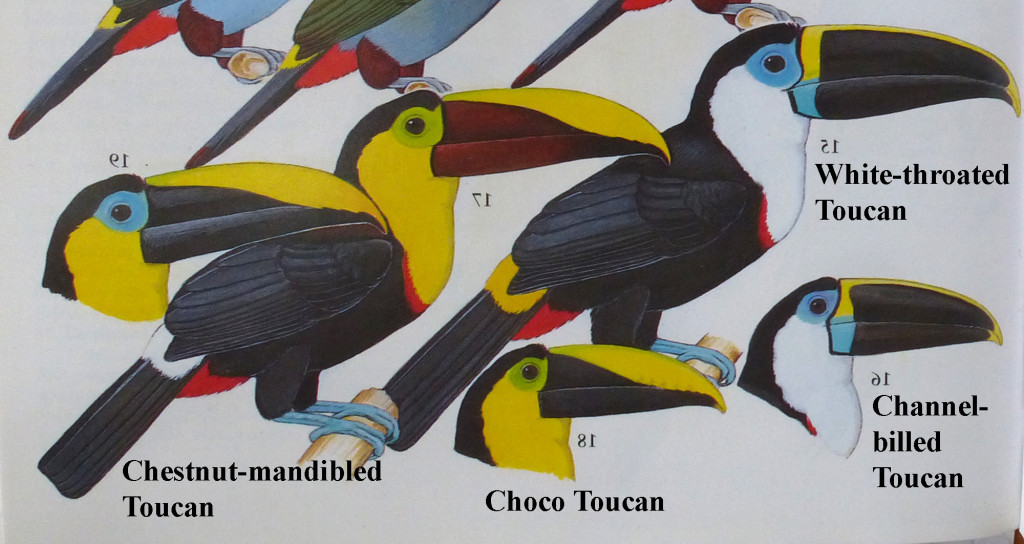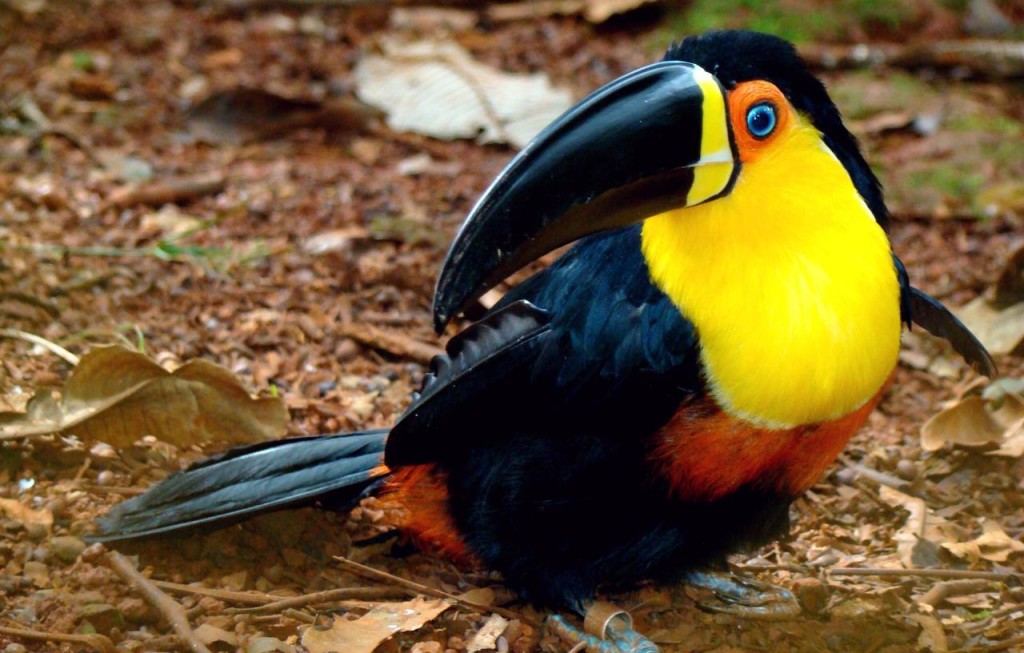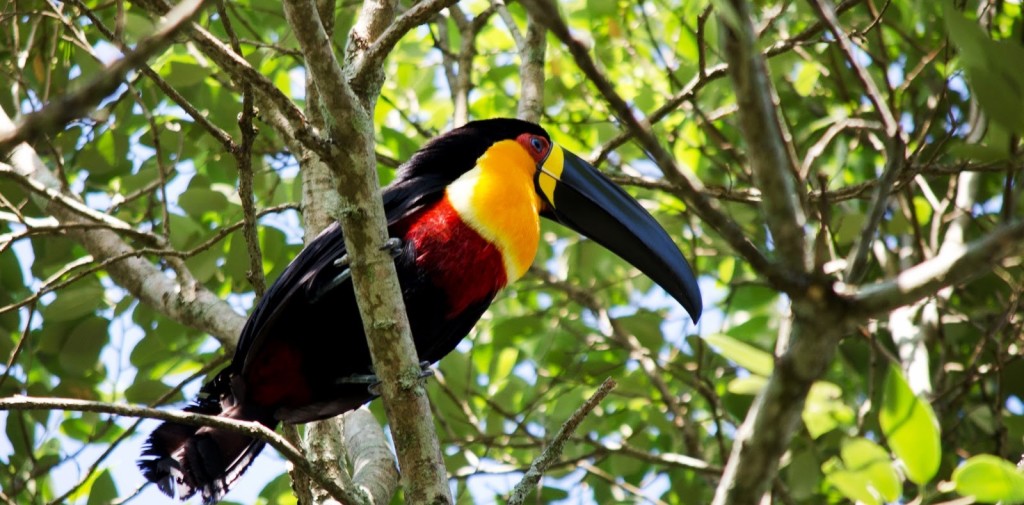The Channel-billed Toucan (Ramphastos vitellinus) is a toucan that is found in Trinidad and Tobago, Guyana, Suriname, and French Guiana and in tropical South America, in the southeastern Amazon, as far south as southern Brazil, north-western Venezuela, and central Bolivia. Normally they are found in the forest and woodlands areas, and extend into drier regions, particularly along waterways. Moreover, they can also be found in lowlands areas but may wander up to an altitude of 1700 meters.
The Channel-Billed Toucan upper plumage, abdomen, tail, and bill are black; however, upper-tail and under-tail feathers are red. Moreover, the bare eye patch and bill base are blue and throat is white, and the chest is yellow-orange fading to white on the sides. The irises are dark brown and the lower chest sharply contrasts with a broad red band. The mating ritual is a fun-loving affair for toucans, as they throw fruit at one another.
Just like other toucans, the channel-billed has a huge bill, typically 48 cm long and 9 to 14 cm bill and 300 to 430 g weighs. It is very akin to Cuvier’s Toucan (Ramphastos tucanus cuvieri) makes you confused. The Channel-Billed likes to eat fruit but can intake insects, tiny reptiles, eggs, and frogs. Vocally, the channel-billed toucan is a very conspicuous bird. Its call is a repeated, high pitched single note and it can be described as a croak or yelping sound cree-op cree-op cree-op.
As it makes each note of sound, it lifts and drops its head while holding its tail feathers erect and making side to side movements on its perch, and pairs of channel-billed toucans tend to communicate vocally in an irregular chorus. The Channel-Billed is fairly long-lived with a lifespan is 20 years. The captive toucans cannot learn to talk like parrots, but they are very much quieter and friendly and easy tamed. So far, global population size has not been quantified, but this species is described as “fairly common”.
The male and female birds are very active in raising the newborns. The Channel-billed Toucan breeds between March and June and during the breeding season, one of these Toucans would lay between two and four eggs which are incubated by both the male and female in a high unlined tree cavity and have a generation period of 18 days, and incubate for 15 to 16 days.
Although in some cases, they can be impatient sitters, often leaving their eggs uncovered for hours at a time. The newborn channel-billed is blind and naked at birth and opens their eyes after three weeks. Moreover breeding in captivity requires attention to a number of details; even successful breeder’s rates are as low as 30% for the incubation of eggs.
The young channel-billed remain in the nest after hatching and have short bills and specialized pads on their heels to protect them from the rough floor of the nest. Their feathers do not start appearing until 4 weeks old. Moreover, they’re stranded and unable to leave the nest for about 8 weeks, dependent upon both parents to feed them. After this, the young can care for themselves.
They start to leave the nest after 40 to 50 days, depending on bird size. Channel-billed toucans reside in small families including two parents and a young. They may also form small flocks numbering 3 to 12 individuals. Oftentimes they’ve joined groups of other bird species including other toucan species to feed. When traveling, they mostly fly alone, in pairs, or in straggling groups arranged in single file.
Amusingly, the babies are born with a smaller bill which takes more than a few months to reach full size. Thus, not only has the Toucan amazed the world with its majestic beauty but it has also mystified the world. For a long time, biologists have been captivated by the Toucan’s outstanding beak. Why was it so large? Therefore, some advised that it aided in the picking of fruit, while the others, that it was a deterrent to competition.
Thus, new research has revealed that the beak in fact supports regulating the Toucan’s body temperature. This species is suspected to lose population due to the extent of appropriate habitat in the Amazonian portion of its range over 35 years. By taking the pessimistic scenario of forest loss and factoring in the species’ susceptibility to hunting, fragmentation, and edge effects, it is suspected to decline by 32.1% over three generations from 2000.
Also, Read Black Drongo! Wholly Black Bird With a Distinctive Forked Tail
You can find more detail about toucans on Wikipedia here.
Source: Beauty of Birds & Wikipedia

Rio de Janeiro, South America

















